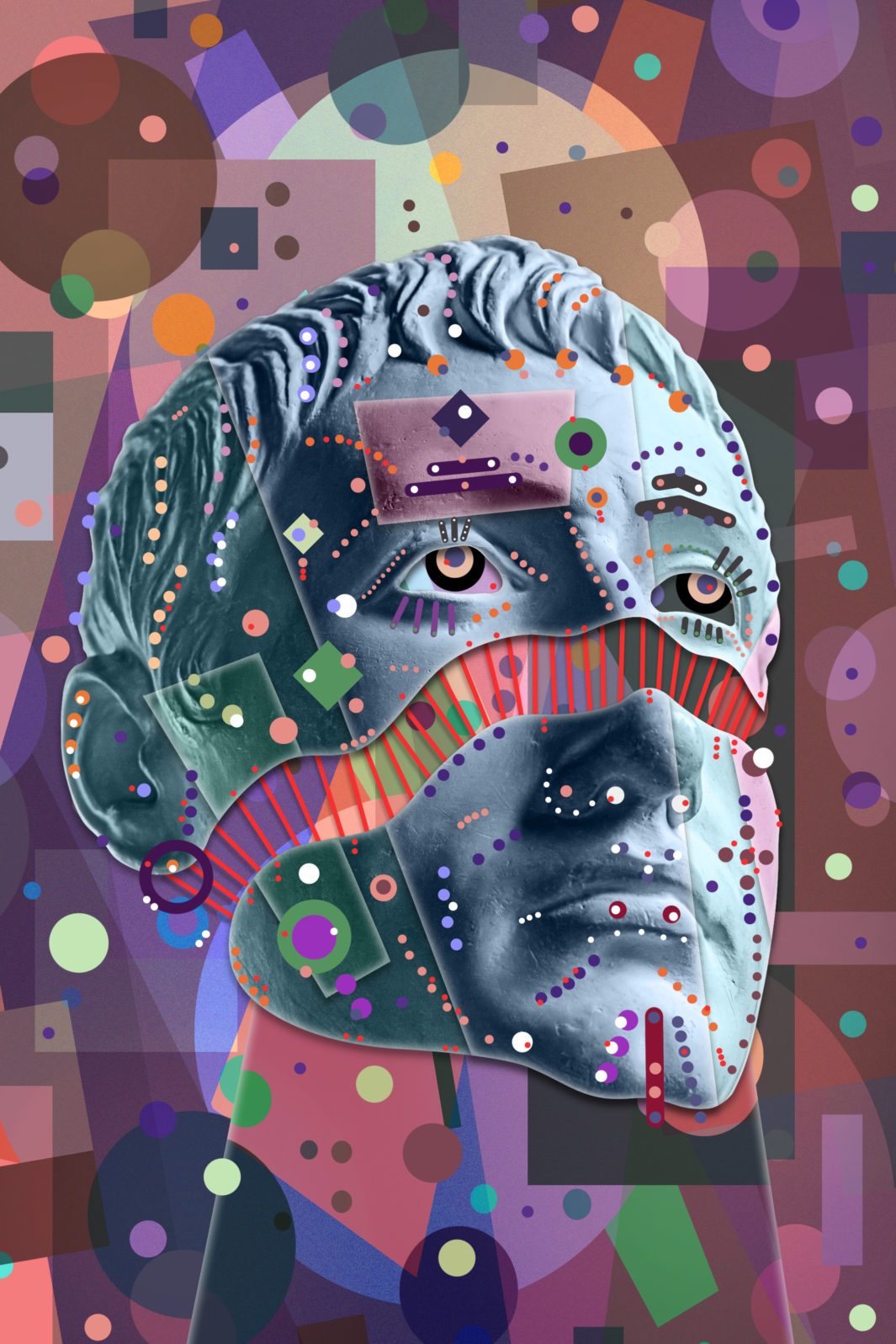What Gives NFTs (Non-Fungible Tokens) Their Value?
But first, a tour through the seamier side of the internet, supported in large part by the very blockchain that mints NFTsHere’s the second part of Episode 2 of the discussion between computer engineering prof Robert J. Marks and computer engineering grad students Adam Goad and Austin Egbert on the wild new online world of digital money, fan gear, contracts, and art. In the first part, Adam and Austin explained how digital collectibles — non-fungible tokens (NFTs) — work (or don’t). In this second part, What are NFTs?, they look at how people use them, with a sidestep into the swashbuckling world of crypto crime:
A partial transcript, notes, and Additional Resources follow.
The discussion continued with the NBA’s use of NFTs as the new “trading cards.” How are NFTs like or unlike the iconic cards?
Adam Goad: That one is a bit of a special case in terms of copyrights. They are still selling them as NFTs but you cannot really use them outside of their website. So they are able to maintain that control over them and you do not actually have ownership of the video clip. But you may look at it and you may tell people that it’s yours on that website.

Robert J. Marks: Understood. One of the interesting applications of non-fungible tokens that you told me about was investment in business. If you have a business and you want to raise capital, maybe you can do it using a non-fungible token. Could you talk about that?
Adam Goad: The SEC [Securities Exchange Commission] is still trying to figure out how they’re going to weigh in on this issue… but yes, there are companies who have been very successful in raising money by selling NFTs.
Robert J. Marks: I don’t look forward to the government regulation, but there does have to be some sort of oversight of this so that people know what their rights are with non fungible tokens. Right now I think it’s totally in the air.
Government rules but can it enforce its rules? It’s cat and mouse…
Adam Goad: Yes. It’s very much kind of the wild west out there right now within NFTs. But yes, you’re right. If the government wants to do something about it, they can try to tax you. They can tell you that you can’t do things. But due to the decentralized nature, they have no enforcement mechanism.
One example of this that we’ve seen recently is that Russian oligarchs are using this to get around sanctions. They are able to still send transactions through cryptocurrencies and there’s
nothing anyone can do to stop them.
Robert J. Marks: There was a great book called American Kingpin (2017) about a guy that used to sell drugs over the Tor internet [Dark Web] and do the trading using Bitcoin. For some reason, they couldn’t track him down through the transactions… But they came in and they did a sting on this guy, recognizing that if he closed his laptop or hit a certain key, everything in his file would be encrypted. He used to do his work at internet cafes, and they knew where he went for the internet cafes.
So they set up a sting. A number of agents positioned themselves at different places in the cafe while this guy was clicking away on his laptop computer, and something happened behind him. Two of the agents, a male and a female, pretended to get into an incredible fight. And the guy who was at his keyboard turned around to see what was happening. A guy sitting in front of him across the table grabbed his laptop before he could close it and the guy behind him grabbed him across the chest and the arms so he couldn’t move. So for some reason, that’s the way they put the sting on him as opposed to tracing it through the Bitcoin transactions.
Note: The “Dread Pirate Roberts,” as he styled himself, was Ross William Ulbricht. arrested on October 2, 2013 on drug trafficking charges and sentenced in 2021 to life in prison. He is credited with founding the Silk Road, “the world’s largest digital black market.”
You may also wish to read: Deep Web? Dark Web? What’s dangerous? What’s to know? The Deep Web hosts information like bank statements and health records so a search on your name won’t turn them up. The Dark Web is used by journalists and whistleblowers trying to protect their identities or sensitive information, not just by traffickers and hackers.
What about claims that crypto transactions are anonymous?
Robert J. Marks: Later on, there was a great sting of kiddy porn — a kiddy porn site that was run similarly through the Tor network out of South Korea. And they were able to put the sting on this guy and arrested over 600 people that were using this kiddy porn simply by tracing the transactions on Bitcoin. How private are transactions on Bitcoin?

Adam Goad: On Bitcoin, there is no inherent way to chase who owns a wallet. So when you set up your Bitcoin wallet, you get a random sequence of hexadecimal values and you have a private key and a public key. That public key, part of it goes into becoming what is known as your “address.” Anyone can send something to your address. Your address is public and will be recorded in the chain. Your private key is what sets up your ownership of it. This private and public key is then used cryptographically to confirm that you own this account. And any transaction from your account must be encoded using that private key. That way you are always able to confirm who owns an account. But that does not require someone to identify themselves — to say that they own it.
Robert J. Marks: And you identify them through their public key, right?
Adam Goad: Yes. Which is just a hexadecimal value. It has no connection back to a person’s real identity.
Robert J. Marks: I’ve heard of people losing their private keys and ending up losing millions of dollars on Bitcoin because they forgot what their private key was or their personal key was, or they died or something like that, and it’s totally lost forever.
Note: Here’s an actual case, recounted by Jonathan Bartlett: “It’s almost a parable: Everyone can see, no one can access, the millions trapped in the ether by a password known only to a dead man… This week, it has been reported that there is a Bitcoin exchange with $190 million dollars worth of assets which are no longer accessible by the users. What happened? Were they misspent? Misinvested? Laundered? Stolen? Nope. None of the above. In some ways, it’s worse than that: Gerald Cotton, founder of Canadian cryptocurrency exchange QuadrigaCX, reportedly died of Crohn disease in India December 9, 2018, taking the secret password to a reported $190 million with him to the grave, according to his widow Jennifer Robertson
Austin Egbert: Without the private key, you no longer have a way of accessing the funds within your wallet. So it’d be like if you kept all of your money in a safe deposit box at the bank. You lost the key and let’s assume that you had no other mechanism of drilling into it or getting stuff out of it. It’s just locked in the box and no one’s ever getting hold of it, essentially.

Robert J. Marks: I see.
Adam Goad: Several people, back in the early days of Bitcoin — perhaps they mined Bitcoin, bought it in different ways — but then they thought it would never go anywhere. And they lost the keys, they lost the computers it was on — and they lost millions of dollars from doing that.
Robert J. Marks: So how would you conjecture that this guy that ran this kiddy porn site off of Tor got stung? Were they looking at patterns of transactions? They clearly identified him from that, right?
Adam Goad: Right. All transactions are public. That is, all [are] stored in the public blockchain ledger. It is an immutable record, anyone can look at it. There are websites you can go to — Etherscan is a very popular one — for looking at the Ethereum blockchain. You can go on there and follow transactions all day long. Though the only way to tie that back to someone is to interact in the real world somehow. You can have a thousand Bitcoin but you can’t buy a loaf of bread with it unless you can take it out of the blockchain and someone will give you dollars for it. That is how they catch and identify people.
Austin Egbert: Yes. The government had passed a regulation saying that if a business is operating an exchange where I can give them dollars and they give me Bitcoin or vice versa… those exchanges are required by law to confirm people’s identities. When I make an account there, I have to say, “I’m so and so, here’s my driver’s license,” or whatever else. And they have to report all of that for tax purposes, et cetera. But it also allows the government to make those connections in terms of who is operating a given Bitcoin address.
Robert J. Marks: I knew the IRS had to figure out some way to tax Bitcoin earnings and things of that sort. So that’s…
Cryptocurrency is only absolutely private when it is like cash
Austin Egbert: It’s interesting to note that it’s the exchange where everything kind of breaks down. Just like with cash, if you only ever receive cash and spend cash, that’s not going to be traced back to you… Just like with Bitcoin, as long as you’re only ever receiving Bitcoin and then spending Bitcoin, there’s no record necessarily of who’s making that transaction. It’s only once you try and jump currencies. To go back to the dollar example, if you had a job and your employer paid you with a transaction straight to your bank account, you weren’t paid in physical cash. So now there’s a record of, hey, this transaction was tied to you and now the government knows you received that much money because it gets reported.
In this environment, how can art become NFTs?
Robert J. Marks: Got it. Adam, let me ask you another question. I’m a cartoonist; I cartoon for fun. Because I go to all these faculty meetings and I’m bored out of my skull, I sit there with a blank sheet of paper and a pen and I draw characters of my colleagues. So I have a bunch of these sketches. I want to put them in a non-fungible token, where do I go? And does it cost me money to start a non fungible token?
Adam Goad: There are a couple of options. Some services will kind of do the legwork for you. Places like OpenSea. OpenSea is the most popular NFT marketplace right now. And they also provide a service where they will basically make an NFT for you. You can go there and buy, sell, trade, auction NFTs. But they also provide a service where they will launch an NFT for you using a slightly different mechanism than usual that is not really an on-chain NFT as much as it is kind of through their service.
So you can go through a company who will do something like that for you. Or you could go to the blockchain itself. You could write a smart contract or you could go find a copy of one and just use it. And then you would upload your images to the internet. The most common way of doing that is actually through a protocol called IPFS, The Interplanetary File System.
Robert J. Marks: Interplanetary… Do they know something that we don’t? Is there another planet out there that we’re communicating with, or is that just humorous on their part?
Adam Goad: It’s humorous on their part… I’m not as familiar with the back end of it, but I think they do intend for it to work interplanetary one day, perhaps, if we have people on the moon and on Mars.
Austin Egbert: I think the idea is that it’s decentralized storage. So… you can access any of the files anywhere that has access to the network, essentially.
Adam Goad: Right. So instead of storing a photo, say, in Google photos, which puts it only on Google’s server — who could go down or delete it, do whatever they wish with it — it is decentralized and put onto the servers of anyone who is supporting the IPFS network. And they get a small bit of the IPFS crypto in payment for doing a service and you pay a small fee to upload to it.
So then you upload all your artwork so that it is now decentralized and out there and anyone can access it. Then you have to create JSON text files that will actually describe the NFT. It says, “This is the Dr. Marks’ NFT brand, this is drawing number five,” and it points to the image. You also store that on IPFS and you get a link to that. So then you go to your smart contract and you tell it, “All right, we’re going to have 20 tokens, and each of those tokens is going to point to whatever address you have.” Then you would have to pay the gas fees, the transaction fees to put this contract onto the network.

Now, this contract is bigger than a normal transaction. Just the amount of bytes that it contains. You have to pay much more in transaction fees because you’re going to take up a larger percentage of a block. So instead of the miner being able to get fees from 20 different people paying for a transaction to go through, they’re going to only be taking your contract onto the network instead. Now, the fees you have to pay go up and down based off market demand, but that could be anywhere from $50 to a $1000 or more to get that contract published. But then it is done and it is out there and it will be out there as long as the blockchain exists. And it is ready for anyone in the world to come interact with it and buy your drawings.
Robert J. Marks: How much would it cost me, Adam? Give me a ballpark. $10 bucks? A hundred bucks? A thousand bucks?
Adam Goad: Probably right now, with the current market, $500 or less. May be a fair bit less right now.
Robert J. Marks: I know that you’ve invested in a few non-fungibles, Adam…
Adam Goad: Yes. I have invested in an ice cream store, actually.
Robert J. Marks: So how is your non fungible token doing?
Adam Goad: So that one in particular — with the fall of the market, they had problems as well — so that is something that we can get into more. Actually, a lot of these things don’t work out.
Next: Episode 3, Part 1: Are NFTs a bubble that has just plain popped for good? Or is there more to the story?
Here’s the first part of Episode 1: Why don’t some tech moguls like Web3, the new internet? Web3 is a decentralized, less controlled version of the internet, as George Gilder predicted in Life After Google. However, some developers want to go further and make Web3 a virtual reality in which our avatars can live, as in the film Ready Player One.
And the second: What’s really happening with Bitcoin and other cryptos? How, for example, will miners make money when all the bitcoins have been mined? Robert J. Marks, Adam Goad, and Austin Egbert discuss what we hope is NOT the metaverse future, along with where Bitcoin and NFTs are headed.
Here’s the first part of Episode 2:
When you buy a non-fungible token (NFT), what do you own? You are buying someone’s digital idea. Just what legal rights that NFT confers is an open question. But the NBA is now selling them… Iconic images sweep the internet. With NFTs, a collector can say, I OWN that meme! Robert J. Marks and fellow engineers ponder what “own” means here.
You may also wish to read: How can non-fungible tokens (NFTs) be made to work better? Bernard Fickser offers twelve steps to handling NFTs in a way that dispenses with cryptocurrency-based blockchains and works in ordinary online marketplaces like eBay. In Fickser’s view, NFTs can work if they avoid self-serving cryptocurrency blockchains like Ethereum and enable real-world legal transfers of ownership.

And the second:
What gives NFTs (non-fungible tokens) their value? But first, a tour through the seamier side of the internet, supported in large part by the very blockchain that mints NFTs. If computer engineering prof Robert J. Marks wanted to market his cartoons as NFTs, what would he do? What would it cost? Adam Goad explains.
Here’s the first part of Episode 3:
Are NFTs a bubble that has just plain popped for good? Despite the crypto crash, they seem to be developing a life of their own — in ticket sales, for example. The NFTs that sell well now provide more than just “ownership” of an image, Adam Goad tells Robert Marks. They could be a marker of membership.
And the second:
Why didn’t decentralized organizations work in the crypto world? DAOs broke down when people tried to make them interact with the outside world. Adam Goad tells Dr. Robert Marks, as soon as you get a human involved, that human can do something that the code is not telling it to do.
cryptocurrency blockchains like Ethereum and enable real-world legal transfers of ownership.
Additional Resources
- Adam Goad at IEEE Xplore
- Dr. Austin Egbert at IEEE Xplore
- ”Just As Cryptocurrencies Went Mainstream — a Huge Collapse!” by Jonathan Bartlett at Mind Matters News
- ERC-1155 Multi-Token Standard at ethereum.org.
- American Kingpin by Nick Bilton at Amazon.com
- Etherscan
- OpenSea NFT Marketplace
